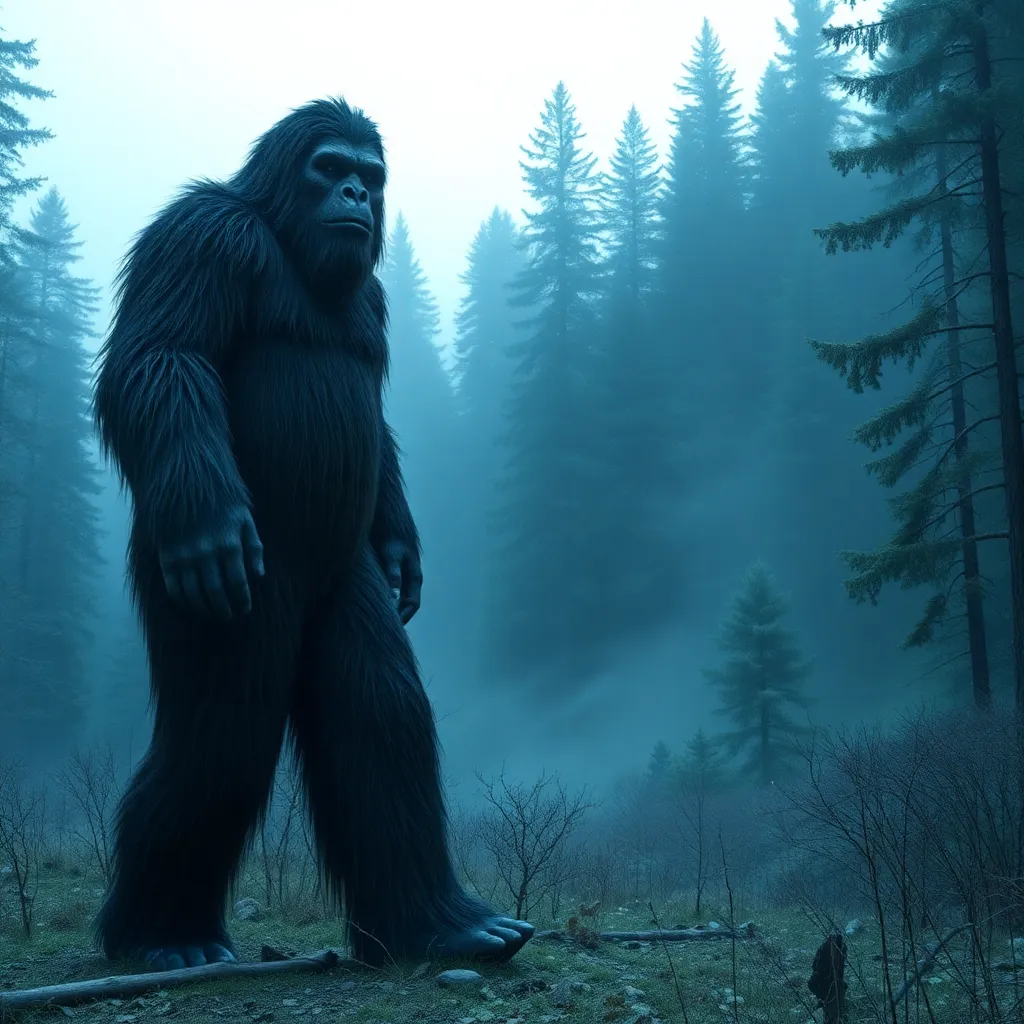The Bigfoot and Human Connection: Stories of Cooperation and Conflict
I. Introduction
The Bigfoot phenomenon has captivated the human imagination for centuries. This elusive creature, often described as a large, ape-like being, is said to inhabit remote forests across North America and beyond. While many view Bigfoot as a mere legend, the stories surrounding its existence and interactions with humans are deeply rooted in folklore and modern narratives.
The importance of these interactions cannot be overstated. They reflect humanity’s fascination with the unknown and our relationship with nature. This article aims to explore the multifaceted stories of cooperation and conflict between humans and Bigfoot, shedding light on both the mythological and real-world implications of these encounters.
II. Historical Context of Bigfoot in Human Culture
Bigfoot’s presence in human culture is not a recent phenomenon; it stretches back to indigenous legends that have been passed down through generations. Various Native American tribes have their own interpretations of similar creatures, often portraying them as guardians of the forest or symbols of respect for nature.
Early encounters with Bigfoot, particularly during the westward expansion of settlers, led to a mix of fear and fascination. Many local communities integrated these stories into their culture, influencing their relationship with the land and the creatures that inhabit it. Over the years, Bigfoot myths have evolved, influenced by media portrayals and scientific skepticism, but the core elements of these stories continue to resonate today.
III. Tales of Cooperation: Instances of Human-Bigfoot Interaction
Despite the sensational stories often associated with Bigfoot, there are numerous documented instances of peaceful coexistence between humans and this mysterious being. Here are a few notable examples:
- Documented Stories: Various individuals and families living in rural areas have reported encounters where Bigfoot showed no signs of aggression. These stories often involve sightings where the creature observes humans from a distance, leading to a mutual respect.
- Shared Resources: Some accounts suggest that Bigfoot may have a symbiotic relationship with local wildlife and humans, occasionally scavenging in gardens or fields with little disruption to human activities.
- Ecological Practices: In certain regions, Bigfoot is viewed as a protector of the environment. Local lore depicts the creature as a guardian of the forests, helping to maintain ecological balance.
IV. The Psychology Behind Bigfoot Encounters
The human psyche plays a significant role in how we perceive and react to the idea of Bigfoot. The need for connection with the unknown drives many to seek encounters with this legendary creature. Such interactions can evoke a range of psychological reactions:
- Fascination and Fear: The allure of the unknown often leads to a mix of fascination and fear during encounters. Many people report feeling a thrill at the possibility of seeing Bigfoot, while simultaneously experiencing apprehension.
- Community and Identity: For some, being a Bigfoot enthusiast fosters a sense of community. Groups dedicated to exploring Bigfoot lore create social bonds, reinforcing cultural narratives.
- Myth-Making: Human encounters with Bigfoot often lead to a process of myth-making, where stories are embellished and shared, further blurring the line between reality and legend.
V. Stories of Conflict: Tensions Between Humans and Bigfoot
While there are tales of cooperation, the relationship between humans and Bigfoot can also be fraught with conflict. Some encounters have escalated into aggression or fear-driven situations:
- Aggressive Incidents: Reports of aggressive behavior from Bigfoot are rare but do exist. Some individuals claim to have felt threatened during encounters, leading to heightened fear and misunderstanding.
- Habitat Encroachment: As human development expands into natural habitats, Bigfoot’s behavior may change. Encroachment on their territory can lead to conflicts, as the creature may become more visible and stressed.
- Media Influence: Sensationalist media portrayals often exacerbate tensions, portraying Bigfoot as a monstrous figure rather than a misunderstood creature. Such depictions can influence public perception and response to sightings.
VI. Scientific Perspectives on the Bigfoot Phenomenon
The scientific community remains divided on the existence of Bigfoot. Research efforts have been undertaken to study the phenomenon, leading to various analyses of evidence:
- Field Research: Several organizations and individuals have dedicated themselves to tracking and documenting potential Bigfoot sightings, using modern technology and methods.
- Evidence Analysis: Footprints, hair samples, and audio recordings have been collected, but the validity of such evidence is often contested. Skeptics argue that many of these findings can be attributed to other animals or hoaxes.
- Skepticism vs. Belief: The debate between believers and skeptics continues, with each side presenting arguments for and against the existence of Bigfoot. This ongoing discussion reflects broader themes of belief, science, and the unknown.
VII. The Future of Human-Bigfoot Relationships
The future of human-Bigfoot relationships is uncertain, but there is potential for coexistence and understanding:
- Coexistence and Understanding: Increased awareness and respect for wildlife can foster a more harmonious relationship with Bigfoot, emphasizing the need for conservation and respect for natural habitats.
- Conservation Efforts: Protecting the natural environments thought to be inhabited by Bigfoot could benefit both the creature and local ecosystems, highlighting the importance of biodiversity.
- Cultural Narratives: As folklore continues to evolve, Bigfoot may serve as a symbol of the unknown, prompting further exploration of human relationships with nature and the mysteries that lie within it.
VIII. Conclusion
In summary, the stories of cooperation and conflict between humans and Bigfoot reveal much about our relationship with nature and the unknown. The enduring mystery of Bigfoot serves as a cultural symbol, inviting reflection on humanity’s fascination with the mysterious creatures that share our world.
As we move forward, it is crucial to approach the topic of Bigfoot with an open mind and a respectful attitude towards both the environment and the narratives that shape our understanding. Continued exploration and dialogue can lead to greater awareness and appreciation for the intricate connections we share with the natural world.



